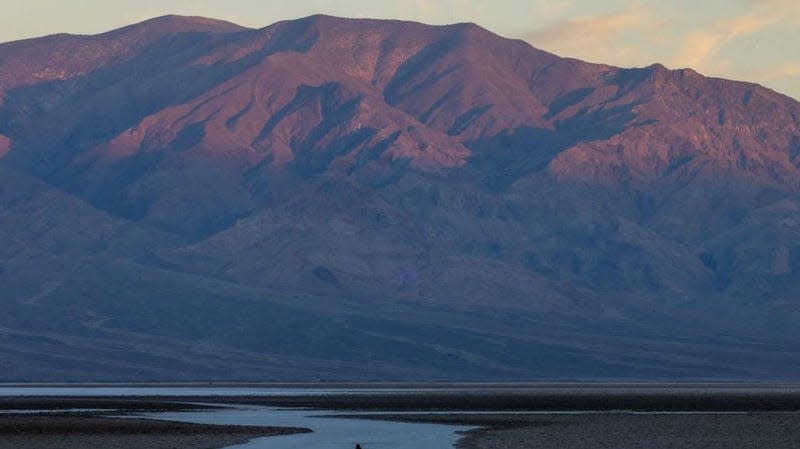The Future Supercontinent Will Be Way Too Hot for Mammals to Survive, Study Says

A man walks on the salt flats at dawn at Badwater, the lowest point in North America at 282 ft (86 m) below sea level, on a day that could set a new world heat record in Death Valley National Park on July 16, 2023, near Furnace Creek, California.
Mammals are halfway through their era on this planet. We’ve existed about 250 million years since mammals evolved on earth and we only have another 250 million left before most of the world is no longer habitable.
A study recently published in Nature Geoscience explained that the world is only a couple hundred million years away from creating a new supercontinent. Researchers used data on continental movements to create a new future map. The scientists also used information about what chemical fluctuations in the atmosphere will look like in the future to create a range of different atmospheric and geological conditions on what they’re calling Pangea Ultima. Remember learning about Pangea in middle school, the supercontinent that formed over 300 million years ago? Pangea Ultima is version 2.0. The reunion of all the continents clustered together again would create an environment so harsh, that it would stop mammals from thriving.
Read more
As Reports Swirl That Cher Hired Men to Abduct Her Son, She's Out Here Enjoying Fashion Week
Trump Tells Supporters EVs Will ‘Spell The Death’ Of The Auto Industry
Castlevania: Nocturne Raises The Bar For Video Game Adaptations To New Heights
Mammals have reigned on this planet due to being able to adapt to warm and cold environments, but most mammals aren’t made to live in extremely hot environments for long periods of time. Humans in particular sweat as a way to naturally cool our bodies down, but there is such a thing as a too-hot world where our bodies’ natural mechanisms won’t work. This is because tectonic movements would create more volcanic eruptions in the future, spewing more carbon dioxide into the atmosphere which will trap more heat on the planet.
“We think CO2 could rise from around 400 parts per million (ppm) today to more than 600 ppm many millions of years in the future,” Eunice Lo, a research fellow in climate change and health at the University of Bristol and study author, said. “Of course, this assumes that humans will stop burning fossil fuels, otherwise we will see those numbers much, much sooner.”
The sun is also expected to become hotter and stronger a few hundred million years in the future. Around 200 million years from now, researchers estimated that the sun is likely to emit about 2.5% more radiation. “Widespread temperatures of between 40 to 50 degrees Celsius, and even greater daily extremes, compounded by high levels of humidity would ultimately seal our fate,” Farnsworth said. Most mammals and future humans (if our species is still around) will expire in what could be permanent 100 degrees Fahrenheit heat.
This means that Pangea Ultima’s coasts are likely to be even more humid than our coastal regions are today, and the vast inland will turn into a large desert. This will lower the planet’s ability to provide enough vegetation for a steady food supply for any human civilization that exists that far out into the future, and for other mammals.
Though this scenario is well into the future, our planet is currently stressing society and animal environments. Climate change caused by burning fossil fuels has warmed our ambient air temperatures at unnaturally fast rates in the last few decades. Without the formation of a supercontinent, or radiation from a stronger sun, the world has experienced its hottest summer in the Northern Hemisphere, and an alarmingly hot start to spring in Australia.
Want more climate and environment stories? Check out Earther’s guides to decarbonizing your home, divesting from fossil fuels, packing a disaster go bag, and overcoming climate dread. And don’t miss our coverage of the latest IPCC climate report, the future of carbon dioxide removal, and the un-greenwashed facts on bioplastics and plastic recycling.
More from Gizmodo
America Needs A New Canal To Connect The Atlantic And Pacific
Dan Harmon publicly addresses his falling out with Justin Roiland for the first time
Sign up for Gizmodo's Newsletter. For the latest news, Facebook, Twitter and Instagram.

